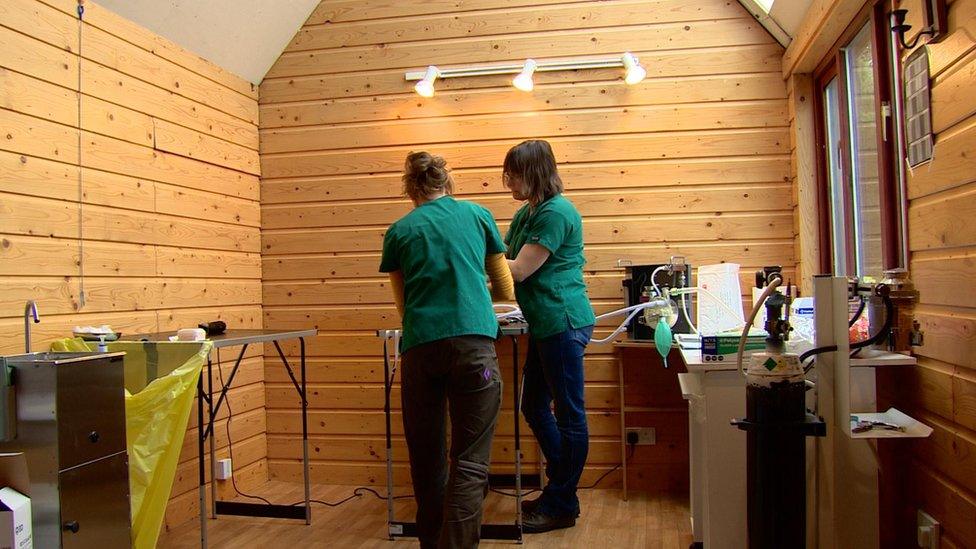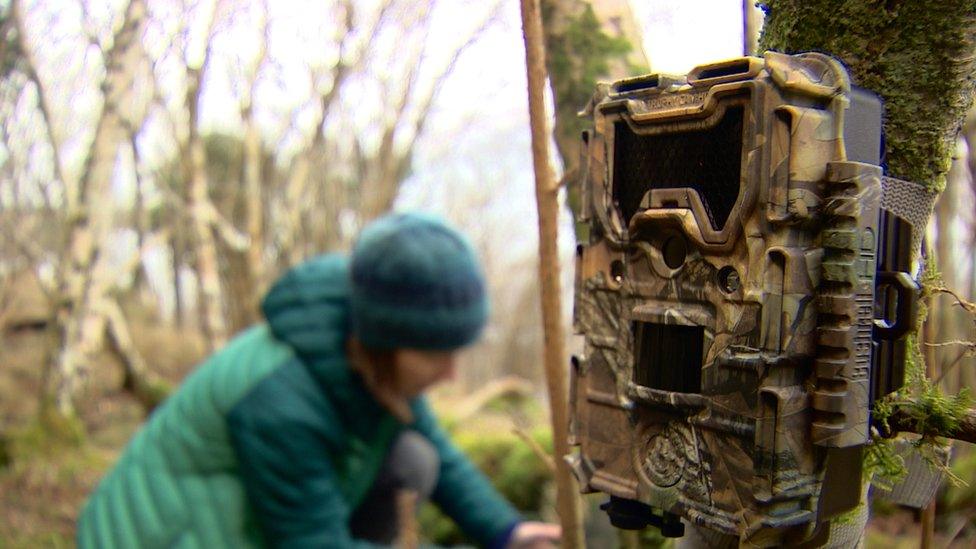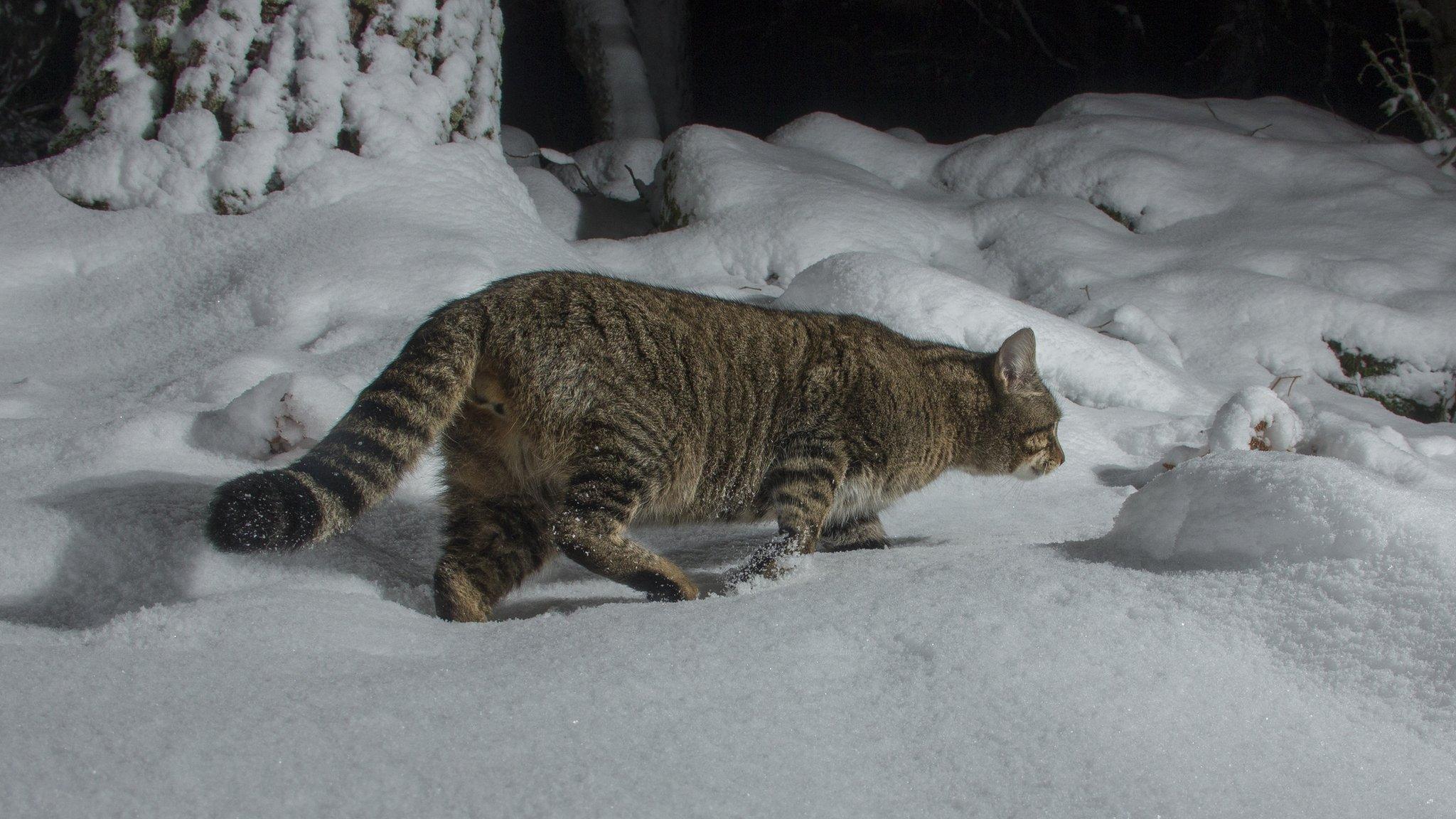Feral cats neutered to protect rare Scottish wildcats
- Published

Only three wildcats, including this one, have been captured by cameras in Morvern
About 80 feral cats have been neutered across Scotland as part of a project to prevent them breeding with wildcats.
The initiative, led by Scottish Wildcat Action (SWA), is the largest of its kind designed to protect the species from extinction.
Pop-up clinics have been set up so vets can perform the operations in remote areas such as the Morvern peninsula.
Cameras traps are also being used to get a better understanding of the spread of the species.
The Scottish wildcat populations have been plummeting in recent decades.
There are believed to be fewer than 300 remaining in Scotland.
Dr Keri Langridge, from SWA, said: "What we hoped to find was evidence that we still had some wildcats remaining on Morvern.
"Fortunately we have found some wildcats clinging on still on the Morvern peninsula, which is fantastic news."
The aim of the neutering effort is to stop the wildcats mating with feral or domestic felines, which dilutes the purity of the animal.

Pop-up vets clinics have been performing neutering operations at wildcat sites
Dr Langridge added: "We don't have any illusions that this is a very ambitious project.
"We have very high targets. To be effective, 'trap, neuter, release' needs to get 75% of the feral cat population so we need the public's help."
About 150 cameras, which are triggered by heat and movement, have been gathering images of both feral and wildcats.
Only three wildcats on Morvern have been captured on film.
But the team have also been asking for local knowledge about the locations of feral cats.
That data has allowed them to lay targeted traps to catch specific animals which live close to wildcats.
Wildcat officer Emma Rawling brought a feral tabby to the pop-up clinic.
She said: "Judging by the markings patterns and the overall physique of the cat, it's definitely a cat of domestic origin, it's got what we call a marble tabby pattern.
"But the scary thing is it was living right next to a really good wildcat so it was a really important one to get caught and neutered."

About 150 camera traps have been laid around Morvern to better understand the animals’ movements
Vet Alice Bacon, from Dingwall, is one of the vets who has been performing the operations.
She said: "We know that domestic cats, feral and pet domestic cats, are now the major threat to wildcats because of hybridisation and disease control so without reducing the population of entire feral cats we'll be unable to secure a future for Scottish wildcats."
The landscape at Morvern, with plenty of ground cover, is ideal territory for wildcats.
It is one of six priority areas where SWA has been intensively studying the populations and trying to protect them.
Few of us may have seen these animals in the flesh, but they remain an iconic Scottish species whose continued existence is far from guaranteed.
- Published10 February 2017

- Published10 October 2016
